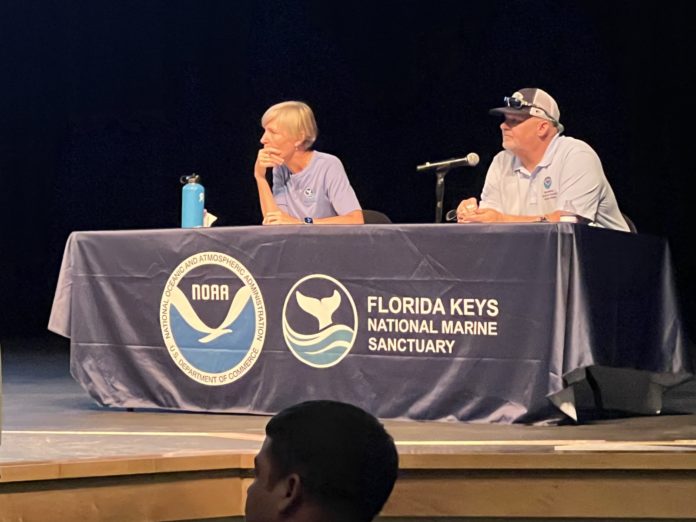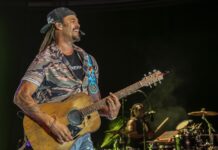
The evening of Sept. 21 found just a few dozen individuals filling the auditorium at Marathon High School for one of three in-person public comment sessions set up by the Florida Keys National Marine Sanctuary as it looks to roll out a new Restoration Blueprint.
The respectful and productive input from about 10 individuals was a far cry from the fever-pitched rants that were common when early versions of potential sanctuary regulation changes were unveiled in August 2019 and opened for public comment. The currently proposed Restoration Blueprint would represent the first significant changes to sanctuary regulations in more than 20 years.
The evening’s comments, which included a good deal of support for the sanctuary’s efforts at compromise, focused largely on impacts to specific commercial fishing areas, proposed no-motor zones and discussion of the use of artificial “casitas” in the spiny lobster fishery.
Marathon charter captain Jimmy Gagliardini expressed support for the sanctuary’s changes, describing the changes he has seen in living coral throughout his life as “catastrophic.”
“I stand here now, and from what I understand we’re at 1.3% of living coral,” he said. “It shocks me that there is so much controversy over this when you’re asking for so little. You’re asking for 3 to 4 percent of what we fish.
“The reefs are in this state because of our doing. … The way I see it, closing these areas is an investment in the future of the reef and the resource. I’m not going to sit here and bicker on the areas that should be closed. … But 2 to 4 percent is not an unreasonable compromise.”
Chris Bergh, field program director for the Nature Conservancy, applauded the sanctuary for taking an open dialogue and avenues for public input “exceptionally seriously,” adding his support for the proposed expansion of the sanctuary boundary to include areas like Pulley Ridge in the Gulf of Mexico.
Commercial fisherman Jeff Cramer reinforced the Florida Keys Commercial Fishermen’s Association’s commitment to cooperating with coral restoration efforts, but urged the sanctuary to continue providing reasoning behind fishing closures in specific areas.
“We just don’t want a closure for closure’s sake, to say ‘Look what we accomplished, we closed this many square miles,’” he said. “I heard all the naysayers years ago, ‘The sanctuary is going to put us out of business by the year 2000,’ and I think the sanctuary was really good with the fishermen. … Let’s keep it going, keep our partnership working.”
Both Cramer and commercial captain Gary Nicols spoke strongly against the use of casitas in the spiny lobster fishery, citing the degrading impacts of discarded items used as artificial habitat – as opposed to biodegradable traps – on the seafloor and grass beds in Florida Bay.
Finally, commercial fisherman Jorge Polanco made the trip from Key West to Marathon’s comment period to speak against closures for commercial fishermen in the Dry Tortugas region.
“I’m 31, and I’ve been fishing since I was 19. … All those fishermen right there, they’ve been there for 10, 15, 30 years,” he said. “You close that area off … they’re going to come up to the east. There’s not going to be enough room for everybody and we will do more damage. We’re all spread out, we take care of our areas we fish because we live off of this.”
More information about the proposed Restoration Blueprint is at https://floridakeys.noaa.gov/blueprint/. Concerned Keys residents may enter a public comment by visiting regulations.gov before Wednesday, Oct. 26 or by attending the meeting of the Sanctuary Advisory Council Tuesday, Oct. 18 at 9 a.m. in Marathon.
























